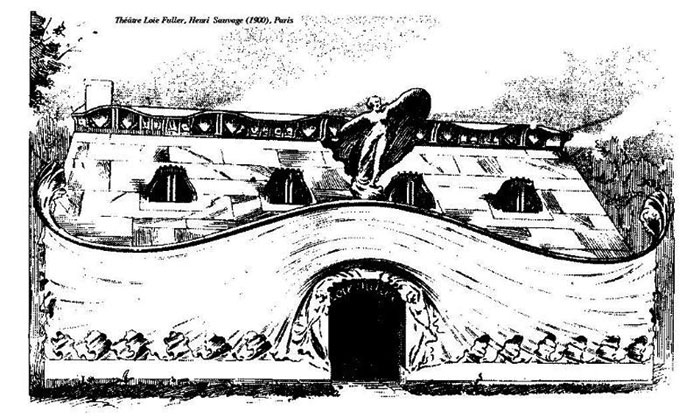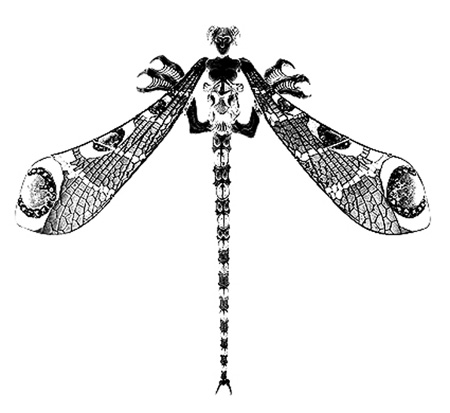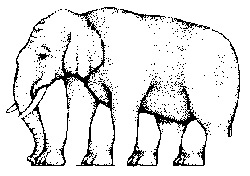|
M
HOTEL DE LA MONTAGNE
We at Leisure Projects are pleased to present the contrary and magical atmosphere of the Hotel de la Montagne in Montreal—a hotel which causes visitors to blink their eyes in wonder, overcome by this unusual glamour-nest of temporary lodging. Leisure admires the efforts of hotel owner Bernard Ragueneau to realise his lofty goal for the Hotel "to dazzle and enchant forever" (Hotel de la Montagne promotional pamphlet, 2006), and—as fellow enthusiasts for moments of metamorphosis that are steeped in the thrall of the imaginary yet firmly grounded in day-to-day experience—Leisure holds his aims close to our hearts. In the following brief tour we consider the work of Bernard Ragueneau as a 1980’s "gesamtkunstwerk"—uniting the arts in a total visual environment; coordinating architecture, painted decorations, furniture, and lighting.
Built as apartments for Expo ‘67 or perhaps the 1976 Olympics, 1430 de la Montagne was reconstructed as a small luxury hotel in 1981. Encumbered by this outmoded monolith during the decadent ‘Dynasty’ years of the nineteen-eighties, we can only imagine Ragueneau as a costumed adventurer, travelling the world gathering a unique collection of objects to fill his hotel lobby. The result is a complex space of his own imagining—an amassment of plaster treasures, cornicing, mahogany panelling, mirrors, and marble as well as paintings and sculptures of wood-nymphs, fairies, and exotic animals. Through his research Ragueneau became pre-occupied with the fascinations of Art Nouveau, delving into dream worlds, fantasy, the esoteric, the occult, and the sexual, to create a world of indulgence and excess that subverted the dominant vogue for Spartan modernism. |

fig.1 Theatre Loie Fuller, Henri Sauvage (1900), Paris
|
As the lights of the lobby dim, we invite you to imagine the environment of Hotel de la Montagne as the performance space of Loie Fuller at the 1900 Paris Worlds Fair, when the dancer announced the age of Art Nouveau through a wild dance of veils, culminating in her transformation into a flower (fig.1). In our imaginations we set this re-staged vision within the glory years of the Hotel – the 1980s, and populate it with privileged women wearing stilettos and high-waisted jeans, draped around the piano bar, flipping straightened blonde hair in the manner of a Timotei shampoo fantasy-come-true.
Within the universe of the Hotel de la Montagne the aura of metamorphosis is heightened by the shimmering reflections of the gilded Fairy Fountain, which dance around walls and sparkle in mirrors, drawing hotel guests into a space of reverie and escape. Reminiscent of the Dragonfly woman corsage ornament by French Art deco glassmaker René Jules Lalique, (fig. 2) the Fairy Fountain is topped by an imaginary being with a grafting of damselfly wings, an embodiment of nature, organic and seductive. A triumph at the Paris World's Fair of 1900, the remarkable Lalique corsage ornament was purchased by the wealthy collector Calouste Gulbenkian; his wife was the only person ever to have worn it. Delicate and refined, the corsage’s long articulated spine and hinged wings would have fluttered with Mrs Gulbenkian’s every movement. In contrast, we cannot help but feel sorry for our gilded fountain fairy with her immobile glass wings and handless arms, she sits constantly exposed, poised in a slightly unconvincing simulation of ecstasy. |

fig. 2 René Lalique, French, 1860-1945
Dragonfly woman corsage ornament, 1897-1898, gold, enamel, chrysoprase, moonstones, and diamonds, 23 x 26.5 (9 x 10 3/8)
Calouste Gulbenkian Foundation, Lisbon
|
Just behind the gilded Fairy Fountain, gleaming Reptilian Waiters are posted at attention. The origin of these statuettes, which had also graced "The Crocodile Bar," one of the Hotel de la Montagne owner’s earlier entrepreneurial adventures, is difficult to ascertain. Some suggest that they were originally procured in Nicaragua, where mythic golden alligators are rumoured to lurk in the depths of remote and uncharted lakes.
Having stood guard for more than a decade, in the early nineteen-nineties the Reptilian Waiters suddenly disappeared from the Hotel premises. After several months of unexplained absence the crocodiles were mysteriously returned to their current placement. Remarkably, upon the statues’ reappearance, staff noticed that the crocodiles were now sporting tiny chequered vests and cravats; coincidentally Ragueneau was as well. |

fig. 3 Dancing Elephant, optical illusion, artist unknown
|
Framing the reception desk in a triumph of stained-wood and Bakelite, the “Ebony Elephants” were collected during Bernard Ragueneau’s adventures in Thailand. We imagine the youthful Ragueneau appreciating cultural lore of dancing Thai elephants (fig.3) and envisioning elephants, like balding lounge singers, performing various numbers (rock, jazz and folk) swaying and prancing, trunks swinging, feet keeping time with the beat, from a fast tempo to a slow, melancholy waltz. The acquisition of two elephant icons must have seemed irresistible to Ragueneau, and his placement of these magical creatures provides guests with a subtle foreshadowing of heady nights ahead on the discotheque floor.
Bridging the lobby and the discoteque, paintings of ladies depicting the Revolutionary Calendar encircle the bar of the Hotel de la Montagne. A precursor to the contemporary pin-up calendar, the Revolutionary Calendar was adopted in 1793. The months were grouped into four seasons each divided by three, and given ‘natural’ names - vendémiaire, brumaire, frimaire (autumn); nivôse, pluviôse, ventôse (winter); germinal, floréal, prairial (spring); messidor, thermidor, fructidor (summer). In place of the old saints' days, each day was dedicated to a suitable fruit, vegetable, animal, agricultural implement. In spite of its symmetry and its poetic months of budding and mists, the new calendar was not a success, and Napoleon abandoned it in the year XII (1804).
Specifically commissioned by Ragueneau, these calendar portraits place a heady emphasis on the relationship between the ladies and their animal companions. Thermidor recalls Leda’s famous date with a swan in Greek mythology, while Germinal uses a symbolic finger to interfere in the relationship between two doves, and a Diana-esque huntress coquettishly removes an arrow from her quiver accompanied by a trusted canine companion.
This text has offered only a brief selection of the objects and oddities presented at the Hotel de la Montagne. For a more detailed and vivid experience please visit the Hotel de la Montagne in person and ask their knowledgeable staff for further information. If this proves insufficient please contact Leisure Projects to schedule a guided tour. Hotel de la Montagne is ideally located in the heart of downtown Montreal within walking distance of such chic and glamourous destinations as Crescent St. and Ogilvy and Harvey Nichols department stores.
Leisure Projects
www.leisuregallery.ca
October 2006 |
|
Meredith Carruthers is an artist living in Montreal. In 2004 Meredith completed her MFA at Concordia University, where her studies included the exchange program to The Glasgow School of Art. In recent projects she has constructed a life-sized crepe paper swan and created a velour archipelagos for tinfoil cats. Meredith has participated in exhibitions in Montreal, Vancouver and New York.
Susannah Wesley is an artist and curator living in Montreal. Prior to this Susannah resided in Glasgow UK where she completed her MFA at the Glasgow School of Art in 2002. Currently she is creating a series of paintings exploring 19th century Ice Palaces while working towards an MA in Art History at Concordia University. She has participated in exhibitions in Glasgow, London, Leeds, Paris and Montreal.
|
|